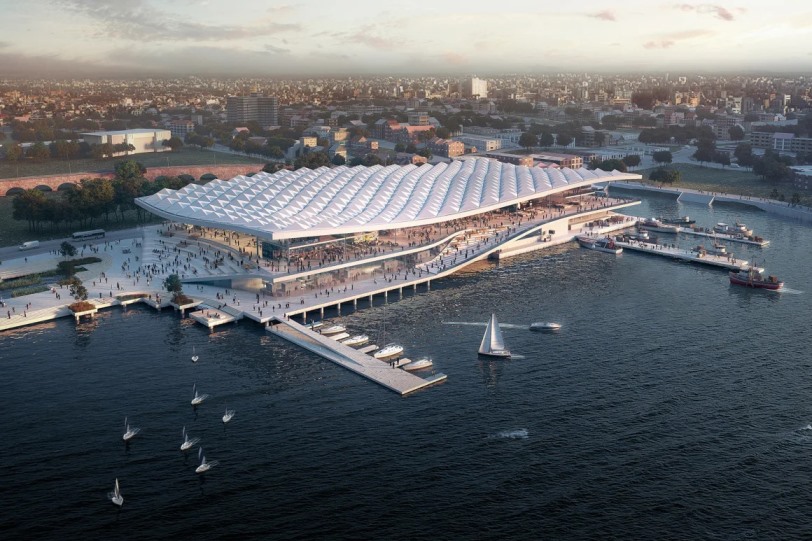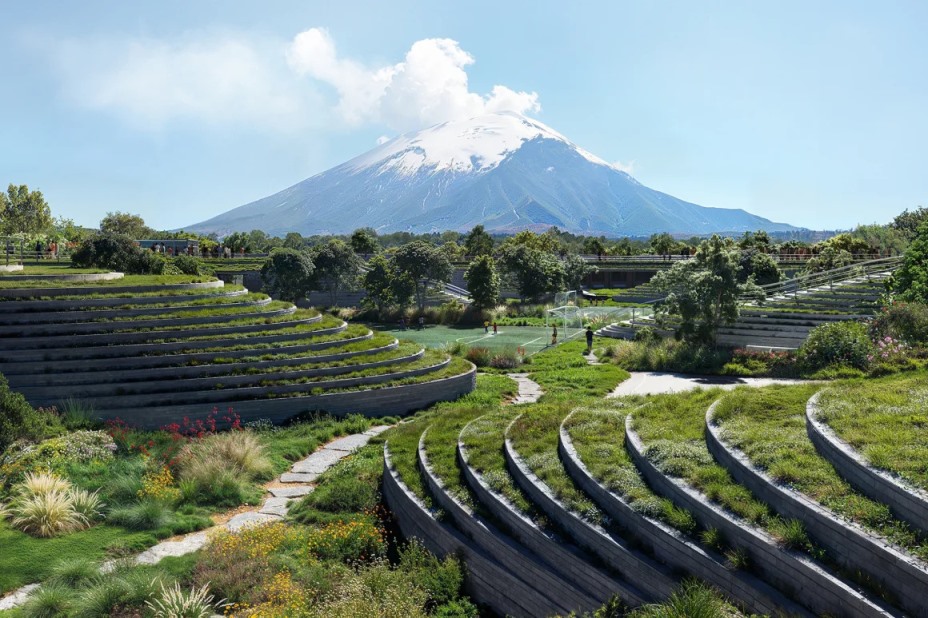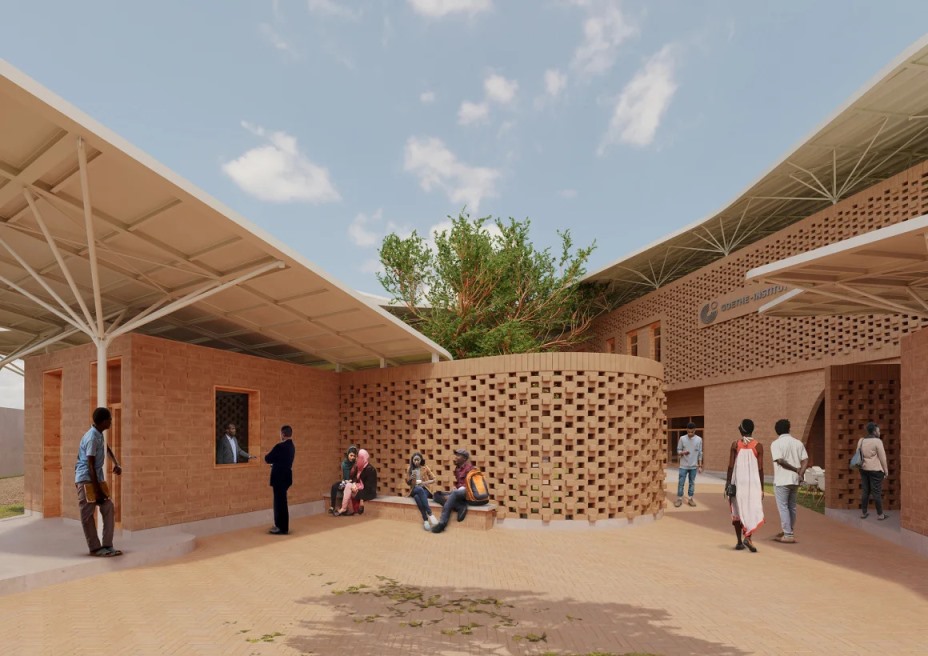8 Architecture Projects are Shaping the World in 2025
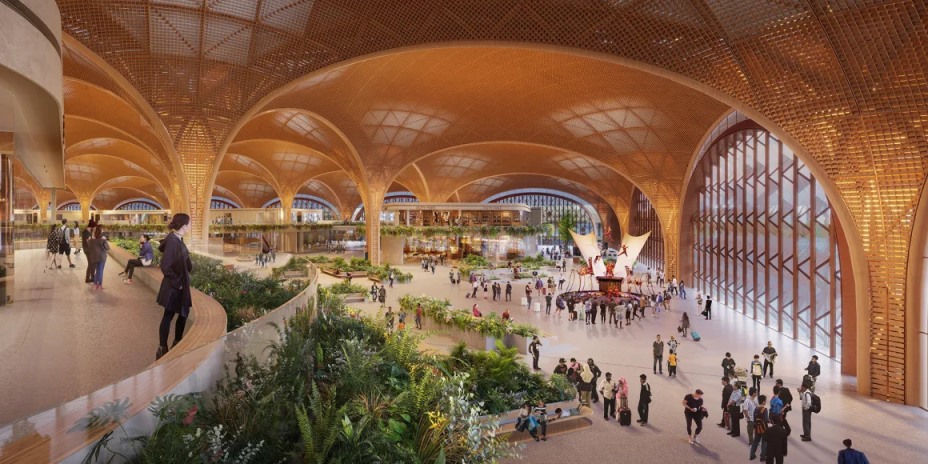
The past year has seen the opening of the world’s second-tallest skyscraper, the reopening of Notre Dame Cathedral and the announcement of countless futuristic urban mega-projects. Yet, the architecture world has, increasingly, recognized the value of altogether humbler pursuits.
In March, the industry’s most prestigious accolade, the Pritzker Prize, was unexpectedly awarded to Japanese housing pioneer Riken Yamamoto, while a small school in suburban Australia was later named the best new building at the World Architecture Festival. So, while 2025 will, as ever, be one that celebrates grand infrastructure projects and feats of engineering, smaller-scale designs — and those with genuine environmental credentials — may also find themselves in the global spotlight. From innovative timber buildings to one of Asia’s largest new airports, here are 8 projects opening in 2025.
1. New Sydney Fish Market, Sydney
The world’s third largest fish market is getting even bigger.
More than eight years after the New South Wales government announced the relocation of Sydney’s historic fish market — which dates to the 1870s but has been on its current site since 1966 — the gleaming new four-floor building is opening on an adjacent 3.6-hectare site.
Designed by 3XN Architects and Australian firm BVN (which promises visitors a “multi-sensory fish market experience”), the reimagined facility balances tourist infrastructure with the functional realities of a working wholesale market. Logistics and operations are hidden away in the basement, while the upper floors contain a market hall for visitors and an auction hall where restaurateurs and retailers bid on fresh catches as they arrive via pontoons.
The project will also help rejuvenate an industrial part of the harbor with shops, restaurants, a promenade and an urban park, while the distinctive undulating roof is topped with 350 triangular solar panels.
EXPLORE ALL BIM TRAINING OPPORTUNITIES BY UDC TRAINING CENTER
2. Grand Ring, Osaka
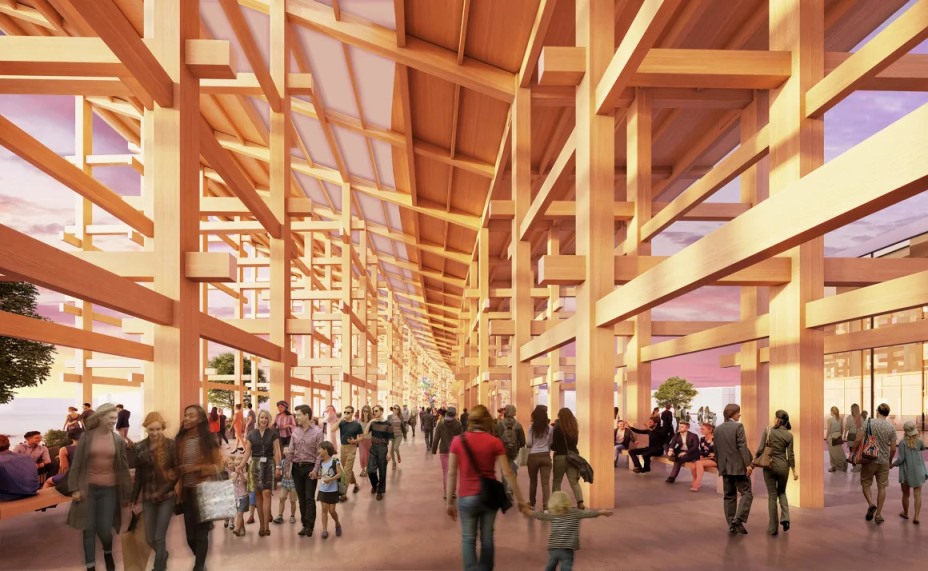
From April to October, Japan’s second city Osaka plans to welcome an estimated 28 million visitors to Expo 2025, which will see around 40 countries build custom pavilions on site. The centerpiece, however, is the venue itself: The Grand Ring, a continuous circular wooden structure, more than 1.2 miles in circumference, that will take visitors around the vast site.
Expo venues can serve as an expression of their host’s design ethos. When Osaka first hosted the Expo, in 1970, it erected a huge space-frame roof by the most celebrated avant-garde Japanese architects of the time. So, in an age where timber buildings offer an alternative to carbon-intensive concrete, it seems fitting that the Grand Ring’s creator Sou Fujimoto is presenting a distinctly Japanese take on the global trend.
Using local cedar and cypress wood (as well as Scottish pine), the architect’s vision combines modern construction methods with the wooden joints traditionally used in Japanese temples and shrines. At almost 646,000 square feet, it will be among the world’s largest wooden buildings. Although intended to be temporary, there is ongoing debate about whether — or how — the structure might be preserved.
EXPLORE ALL BIM TRAINING OPPORTUNITIES BY UDC TRAINING CENTER
3. Life and Mind Building, Oxford
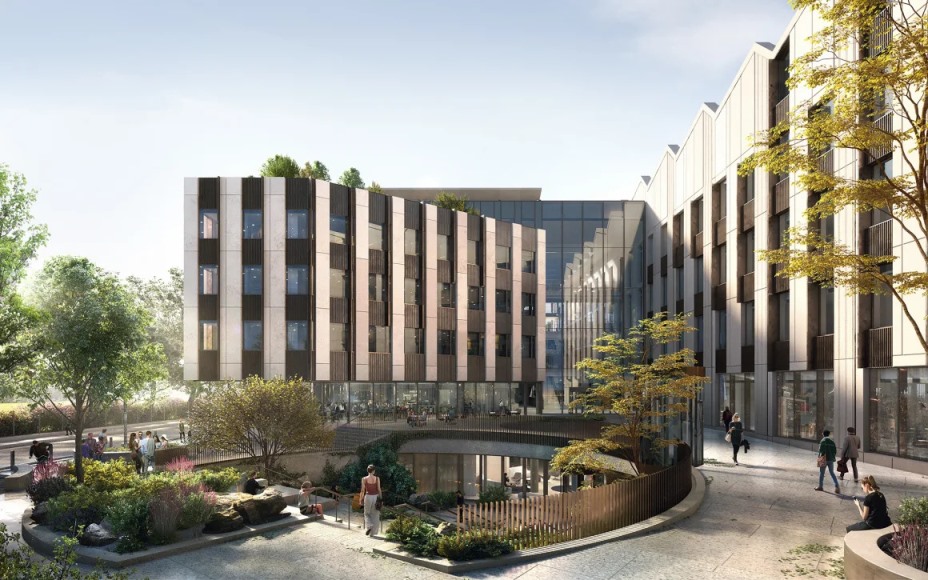
The UK’s University of Oxford may be closely associated with grand gothic architecture, but it also operates in an ever-evolving portfolio of contemporary properties scattered through the city. The latest of them, a new 270,000-square-foot life sciences building, concludes the largest construction project ever undertaken in the institution’s centuries-long history.
The design principles of the Life and Mind Building reflect an academic one: that uniting the departments of experimental psychology and biology under one roof will encourage greater collaboration and engagement between them. Inside, flexible lab spaces accommodate the needs of the different disciplines while a public plaza offers the chance of more casual interactions.
Despite plenty of modern touches, the American architecture practice behind the project, NBBJ, nods to the university’s architectural heritage through stone facades and projected buttresses that produce what it calls a “a timeless but recognizable appearance.”
EXPLORE ALL BIM TRAINING OPPORTUNITIES BY UDC TRAINING CENTER
4. Canadian School, Cholula
Organic architecture is often celebrated for blending (or even disappearing completely) into the landscape, leaving as little trace on the surroundings as possible. There’s perhaps no better example among this year’s new openings than architecture firm Sordo Madaleno’s Canadian School in Cholula, Mexico.
The serene campus looks to the region’s topography for inspiration — namely a nearby pre-Hispanic pyramid and the Popocatépetl volcano, which serves as a dramatic backdrop. The school is arranged around seven circular structures that take the form of overlapping hills, their terraced surfaces providing green spaces for students to explore.
Mexican architect Fernando Sordo Madaleno, grandson of the firm’s late founder Juan Sordo Madaleno, said in a statement that as well as blending with the environment, “the building itself becomes part of the playground.”
EXPLORE ALL BIM TRAINING OPPORTUNITIES BY UDC TRAINING CENTER
5. Techo International Airport, Phnom Penh
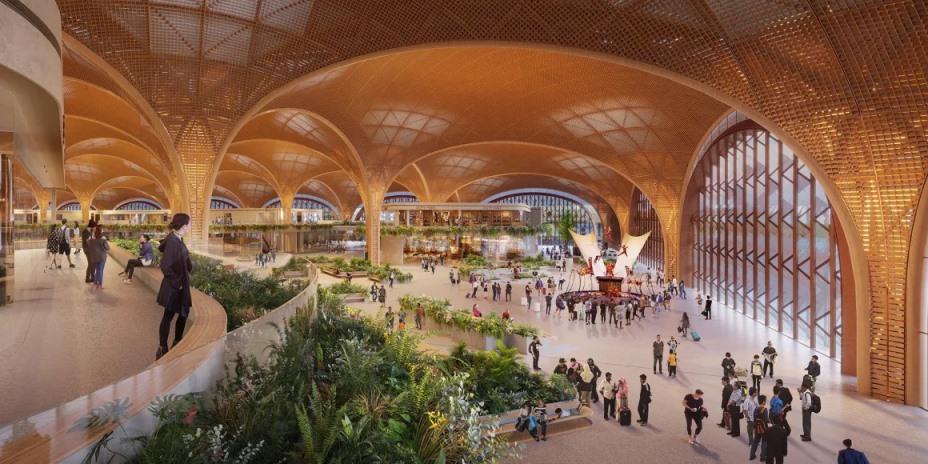
Cambodia is replacing its capital Phnom Penh’s international airport with one capable of handling six times as many visitors. Part of the country’s ambitious bid to boost tourism numbers and become a regional aviation hub, the new Techo International Airport’s initial capacity of 13 million annual passengers will eventually rise to 30 million.
The terminal building, located 12 miles south of the city center, will be one of Southeast Asia’s largest. Plans to generate energy through an onsite solar farm also put it among the world’s greenest, according to architects Foster + Partners.
With a form inspired by traditional Cambodian design, the terminal’s main roof is supported by a series of structural timber “trees” (real trees will also rise through a large central void). Digital renderings show the structure’s gridded steel shell filtering daylight and illuminating an interior bursting with tropical greenery, while passengers will reach their gates via two airfoil-shaped wings.
EXPLORE ALL BIM TRAINING OPPORTUNITIES BY UDC TRAINING CENTER
6. South Station redevelopment, Boston
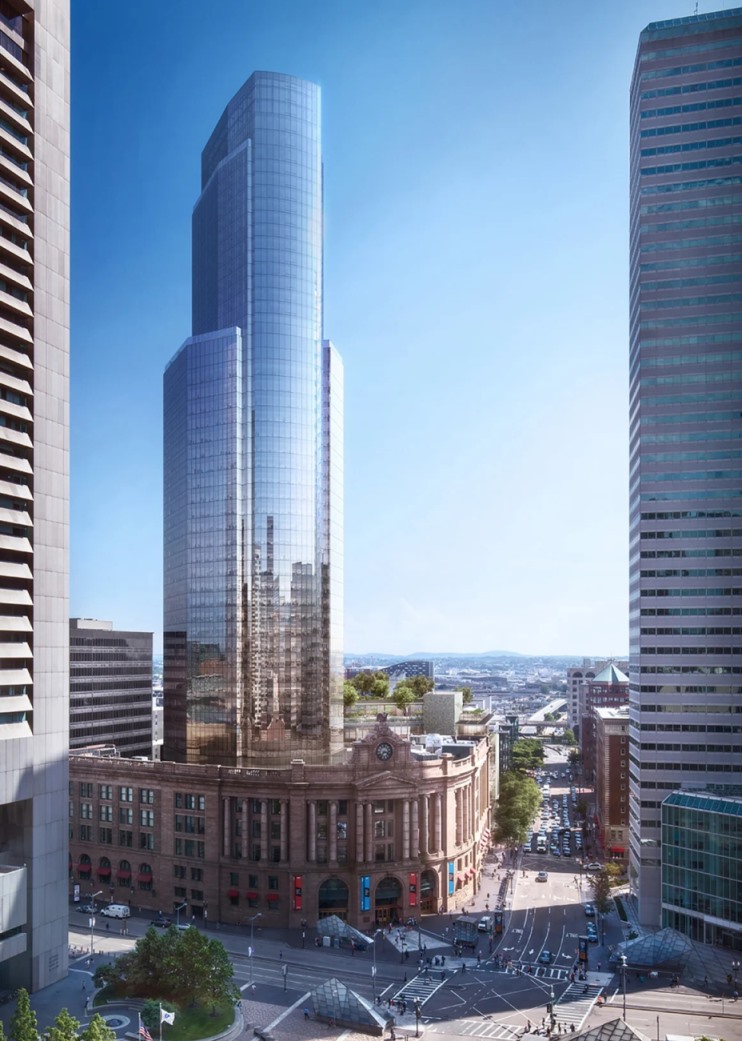
A major expansion of Boston’s South Station, the busiest ground transport hub in New England, is wrapping up this year. Upon completion, the redevelopment project will have increased the terminal’s bus capacity by 50%, while its rail capacity will be unaffected.
Architecturally speaking, the challenge facing American firm Pelli Clarke & Partners was not only to reimagine the hub’s concourse and erect a soaring 51-story skyscraper above it, but to respect the original Classical Revival station building. Listed under the US National Register of Historic Places, it has stood there since 1899.
The resulting contrast — between gleaming glass and weathered stone — was always going to be stark. But the tower’s soft, sculptural form seeks to complement its historic counterpart. The expanded, arched concourse meanwhile offers visitors a more grandiose arrival into the city.
EXPLORE ALL BIM TRAINING OPPORTUNITIES BY UDC TRAINING CENTER
7. Goethe-Institut, Dakar
The first ever African winner of the Pritzker Prize, an award dubbed the “Nobel of architecture,” Francis Kéré is using his global profile to transform the built environment in his home continent.
The Burkinabè architect is a longstanding champion of “vernacular” design, which looks to traditional building materials and construction techniques. And his vision for the new Senegalese branch of Goethe-Institut, the German cultural exchange center, is a case in point.
The 18,300-square-foot building’s gentle curves were designed to mirror the outline of the surrounding canopies. It was constructed primarily from locally sourced bricks, which are made from compacted earth and arranged in lattice formations to encourage natural ventilation.
Speaking to CNN in 2022, Kéré explained the importance of local materials, saying: “The more… you use, the better you can promote the local economy and (build) local knowledge, which also makes people proud.”
EXPLORE ALL BIM TRAINING OPPORTUNITIES BY UDC TRAINING CENTER
8. Urban Glen, Hangzhou
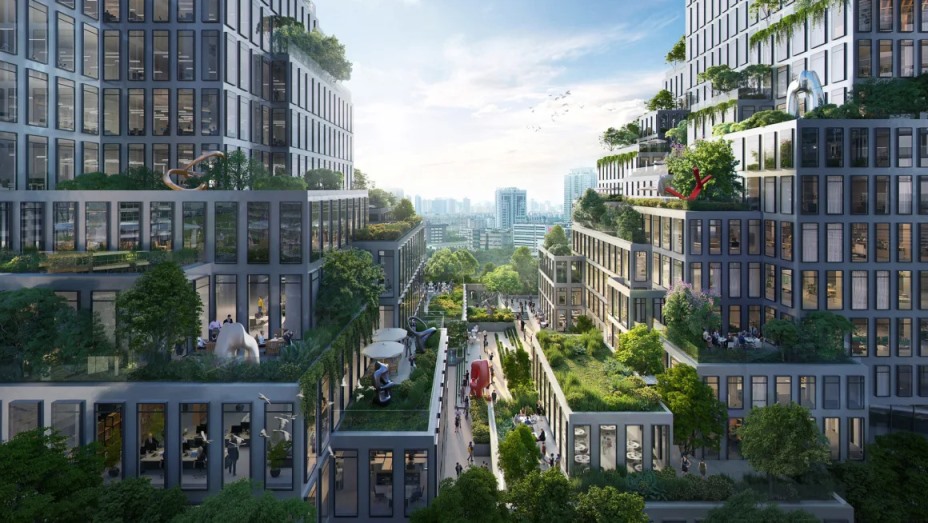
More than a decade after the CCTV Headquarters in Beijing opened to become, arguably, China’s best-known contemporary building, its co-designer Ole Scheeren continues to leave his footprint on the county. The German architect’s firm, Büro Ole Scheeren, currently has major projects underway in various Chinese cities, from Shenzhen to Nanjing.
Among the most striking among is Urban Glen, a pair of dramatically stepped towers containing nearly 900,000 square feet of office, hotel and leisure space in the eastern city of Hangzhou. Like the hills surrounding Hangzhou on three sides, the two volumes — one of which houses a Rosewood Hotel — appear to cascade into a manmade valley of roof terraces, shops and public art.
Share:
Διαβάστε Επίσης
Στη σύγχρονη επιχειρηματική πραγματικότητα, τα δεδομένα έχουν εξελιχθεί σε ένα από τα πιο πολύτιμα
Να μιλήσουν ή να σωπάσουν; Να πάρουν θέση ή να μείνουν «ουδέτερες»;
 Ελληνικά
Ελληνικά  English
English

